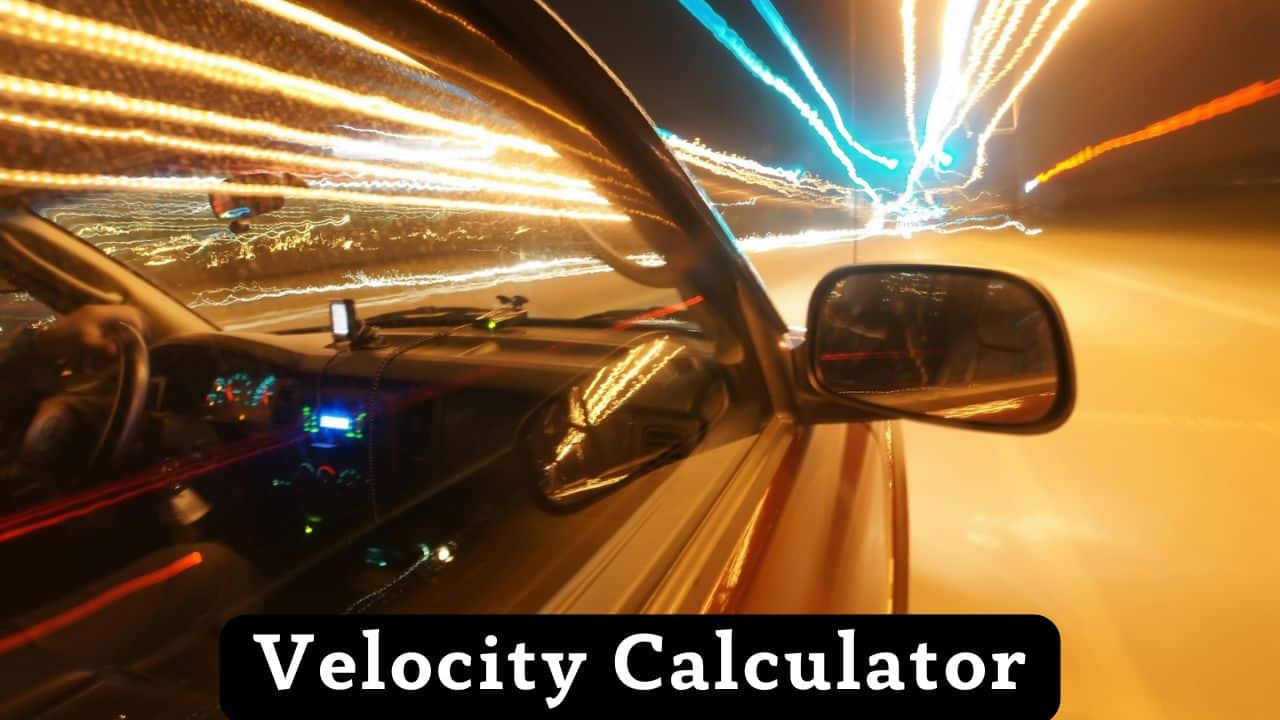
Velocity & Motion Physics
Master the fundamentals of velocity, acceleration, and kinematics in physics!
What is Velocity and Why is it Important?
Velocity is a vector quantity that describes the rate of change of position with respect to time. Unlike speed, velocity includes both magnitude and direction, making it crucial for understanding motion in physics.
Why velocity matters: Velocity is fundamental to understanding motion, predicting future positions, calculating forces, and analyzing energy in physical systems.
Types of Motion:
- Uniform Motion: Constant velocity (zero acceleration)
- Uniformly Accelerated Motion: Constant acceleration
- Variable Acceleration: Changing acceleration over time
- Circular Motion: Motion in a circular path
- Projectile Motion: Motion under gravity influence
- Oscillatory Motion: Repetitive back-and-forth motion
The Physics of Motion and Kinematics
Kinematics is the branch of physics that describes motion without considering the forces that cause it. Understanding kinematic equations is essential for solving motion problems.
Fundamental Kinematic Equations:
First Equation of Motion:
v = u + at
Final velocity from initial velocity, acceleration, and time
Second Equation of Motion:
s = ut + ½at²
Displacement from initial velocity, acceleration, and time
Third Equation of Motion:
v² = u² + 2as
Final velocity from initial velocity, acceleration, and displacement
Average Velocity:
v̄ = Δs / Δt
Total displacement divided by total time
Acceleration:
a = Δv / Δt
Rate of change of velocity
Displacement:
s = (u + v) × t / 2
Average velocity method for displacement
Key Physics Principles:
- Vector Nature: Velocity has both magnitude and direction
- Reference Frame: Velocity is relative to the observer’s frame of reference
- Instantaneous vs Average: Velocity can be measured at a specific instant or over a time interval
- Acceleration: Change in velocity over time, including direction changes
- Displacement vs Distance: Displacement is vector, distance is scalar
- Conservation Laws: Momentum and energy conservation in motion
Vector Components and Relative Motion
Vector analysis is crucial for understanding motion in multiple dimensions. Velocity vectors can be broken down into components and combined using vector addition principles.
Vector Operations:
| Operation | Formula | Description | Applications | Example |
|---|---|---|---|---|
| X-Component | vₓ = v cos θ | Horizontal component | Projectile motion | 50 m/s at 30° → 43.3 m/s |
| Y-Component | vᵧ = v sin θ | Vertical component | Projectile motion | 50 m/s at 30° → 25 m/s |
| Magnitude | |v| = √(vₓ² + vᵧ²) | Vector magnitude | Resultant velocity | √(30² + 40²) = 50 m/s |
| Direction | θ = tan⁻¹(vᵧ/vₓ) | Vector angle | Navigation | tan⁻¹(40/30) = 53.1° |
| Vector Addition | v⃗ = v⃗₁ + v⃗₂ | Combining vectors | Relative motion | Boat + current velocity |
| Relative Velocity | v⃗ₐᵦ = v⃗ₐ – v⃗ᵦ | Velocity of A relative to B | Moving reference frames | Car velocities on highway |
Motion Analysis and Problem Solving
Problem-solving in kinematics requires systematic application of equations and careful attention to vector directions and reference frames.
Problem-Solving Strategies:
| Problem Type | Key Equation | Given Variables | Find | Strategy |
|---|---|---|---|---|
| Constant Acceleration | v = u + at | u, a, t | Final velocity | Direct substitution |
| Free Fall | v² = u² + 2gh | u, g, h | Impact velocity | Use g = 9.81 m/s² |
| Projectile Motion | vₓ = u cos θ, vᵧ = u sin θ – gt | u, θ, t | Velocity components | Separate x and y motion |
| Relative Motion | v⃗ᵣₑₗ = v⃗₁ – v⃗₂ | v₁, v₂, angle | Relative velocity | Vector subtraction |
| Average Velocity | v̄ = Δs / Δt | Displacement, time | Average velocity | Total displacement method |
| Circular Motion | v = ωr | ω, r | Tangential velocity | Angular to linear conversion |
Practice Problems and Worked Solutions
Problem 1: Constant Acceleration
Question: A car accelerates from rest at 3 m/s² for 8 seconds. What is its final velocity?
Click to see detailed solution
Given: u = 0 m/s (from rest), a = 3 m/s², t = 8 s
Formula: v = u + at
Calculation: v = 0 + (3)(8) = 24 m/s
Answer: Final velocity = 24 m/s
Problem 2: Free Fall Motion
Question: An object is dropped from a height of 45 m. What is its velocity just before hitting the ground?
Click to see detailed solution
Given: u = 0 m/s (dropped), h = 45 m, g = 9.81 m/s²
Formula: v² = u² + 2gh
Calculation: v² = 0² + 2(9.81)(45) = 882.9
Final step: v = √882.9 = 29.7 m/s
Answer: Impact velocity = 29.7 m/s downward
Problem 3: Vector Components
Question: A projectile has velocity 50 m/s at 37° above horizontal. Find its components.
Click to see detailed solution
Given: v = 50 m/s, θ = 37°
X-component: vₓ = v cos θ = 50 × cos(37°) = 50 × 0.799 = 39.95 m/s
Y-component: vᵧ = v sin θ = 50 × sin(37°) = 50 × 0.602 = 30.1 m/s
Answer: vₓ = 40.0 m/s, vᵧ = 30.1 m/s
Problem 4: Relative Velocity
Question: Two cars travel at 60 km/h and 80 km/h in opposite directions. What is their relative velocity?
Click to see detailed solution
Given: v₁ = 60 km/h, v₂ = 80 km/h (opposite directions)
Method: For opposite directions, relative velocity = v₁ + v₂
Calculation: vᵣₑₗ = 60 + 80 = 140 km/h
Answer: Relative velocity = 140 km/h
